Abstract
Behavior that is commonly labeled as indicating distress may have an important function in certain clinical problems. Evidence suggests that “distressed” behavior is displayed more frequently by persons who are depressed or experiencing chronic pain. Such behavior includes nonverbal facial expressions and body postures which are typically labeled as “sad,” and verbal responses involving self-denigration or complaints. Such behaviors appear to form a functional response class which has a unique impact on others. The behavior appears to be more likely among persons who are receiving aversive stimulation. Recipients of distressed behavior are more likely to experience negative emotion, yet be solicitous toward the person who displays distressed behavior. Under circumstances where distressed behavior is unsuccessful in reducing aversive stimulation, the behavior may be shaped and maintained by the fact that it temporarily reduces the probability of others behaving aggressively toward the person displaying distress. Thus, the development of a pattern of high rates of distressed behavior that characterizes clinically depressed persons and persons in chronic pain may be partly a result of the unique social contingencies that surround this behavior.
Keywords: depression, distressed behavior, negative reinforcement, chronic pain, social behavior, mental discord
Full text
PDF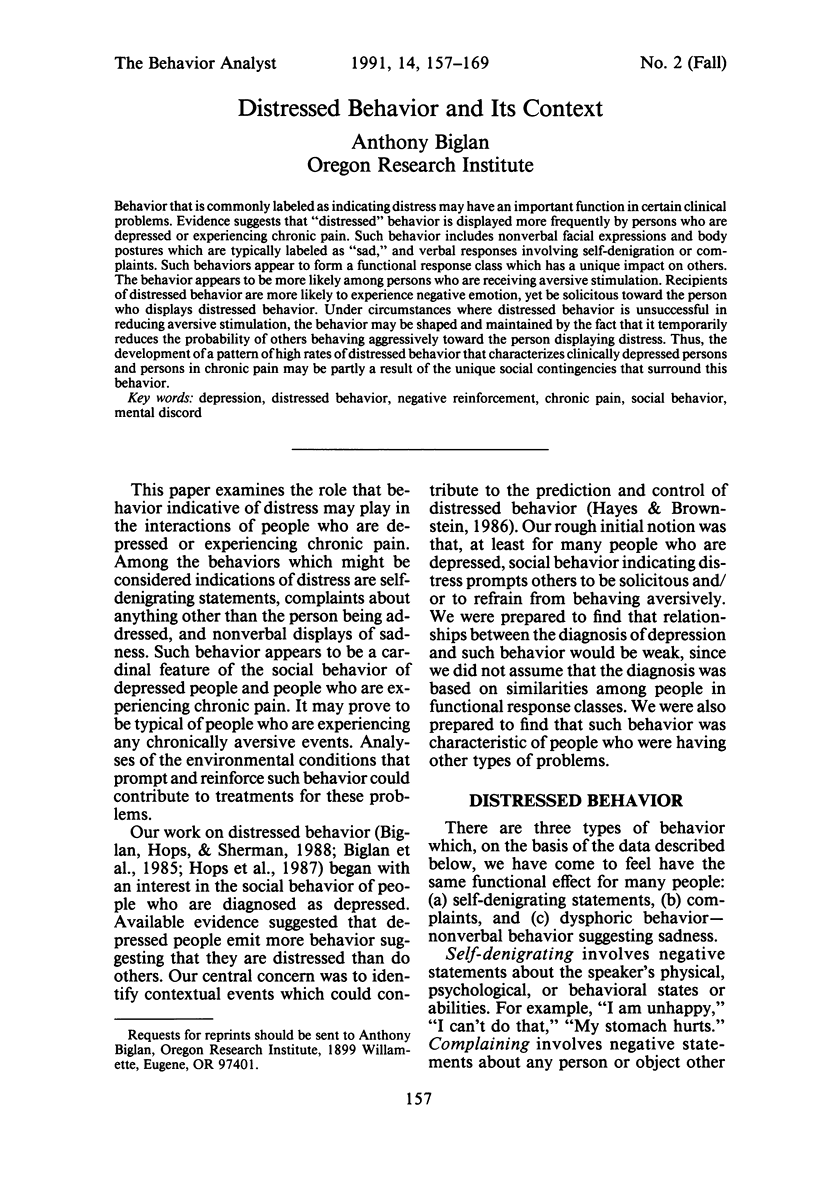
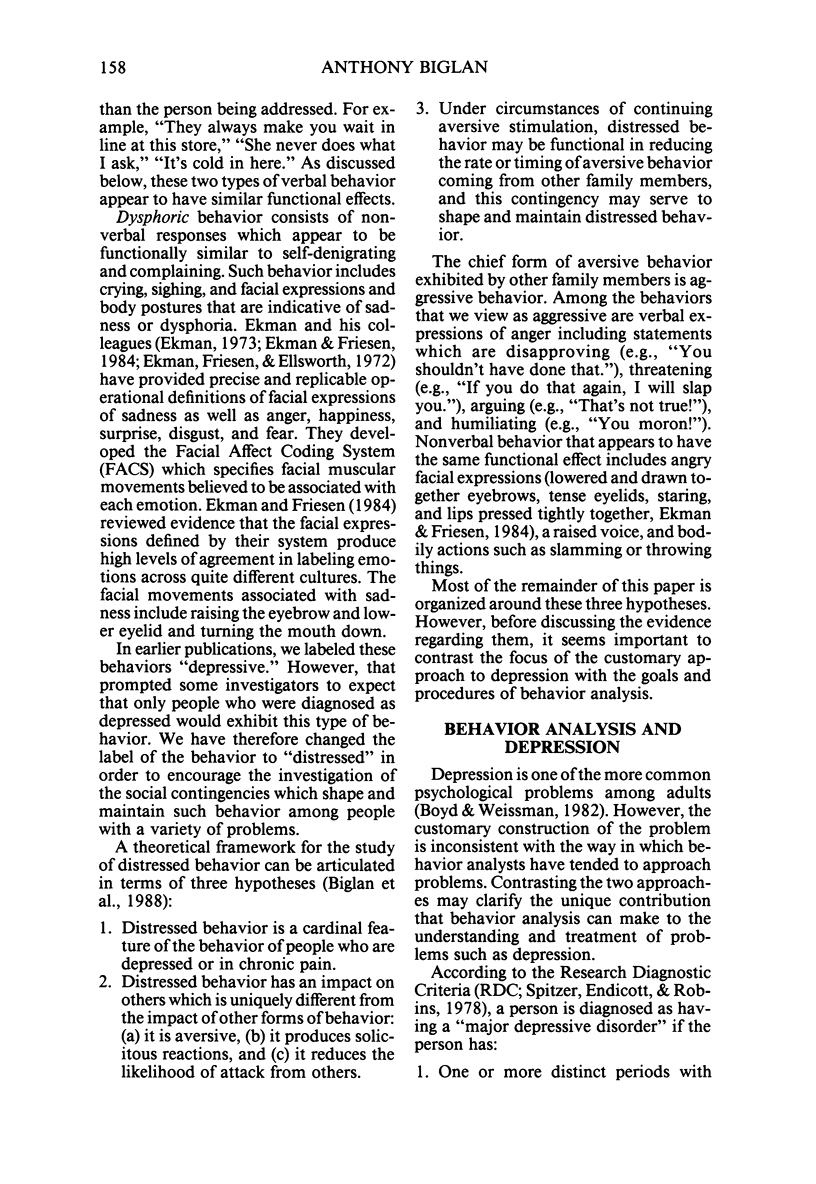
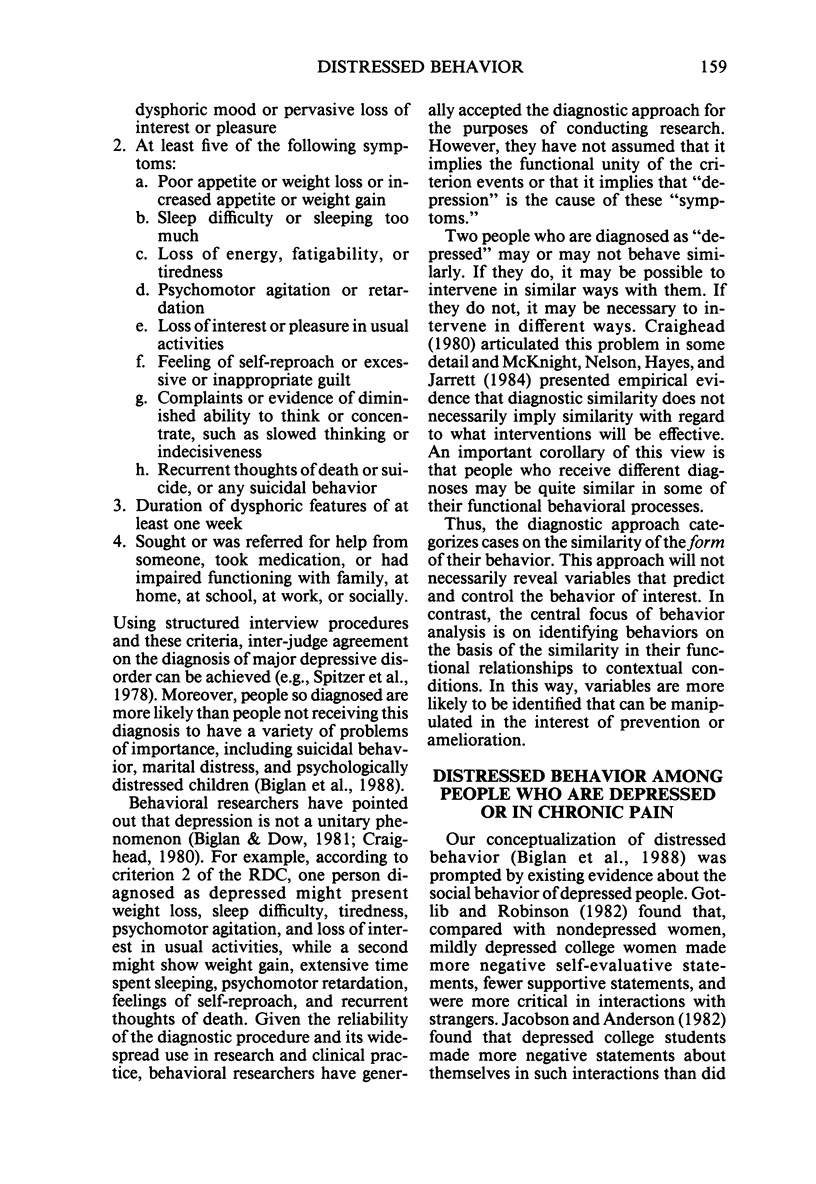
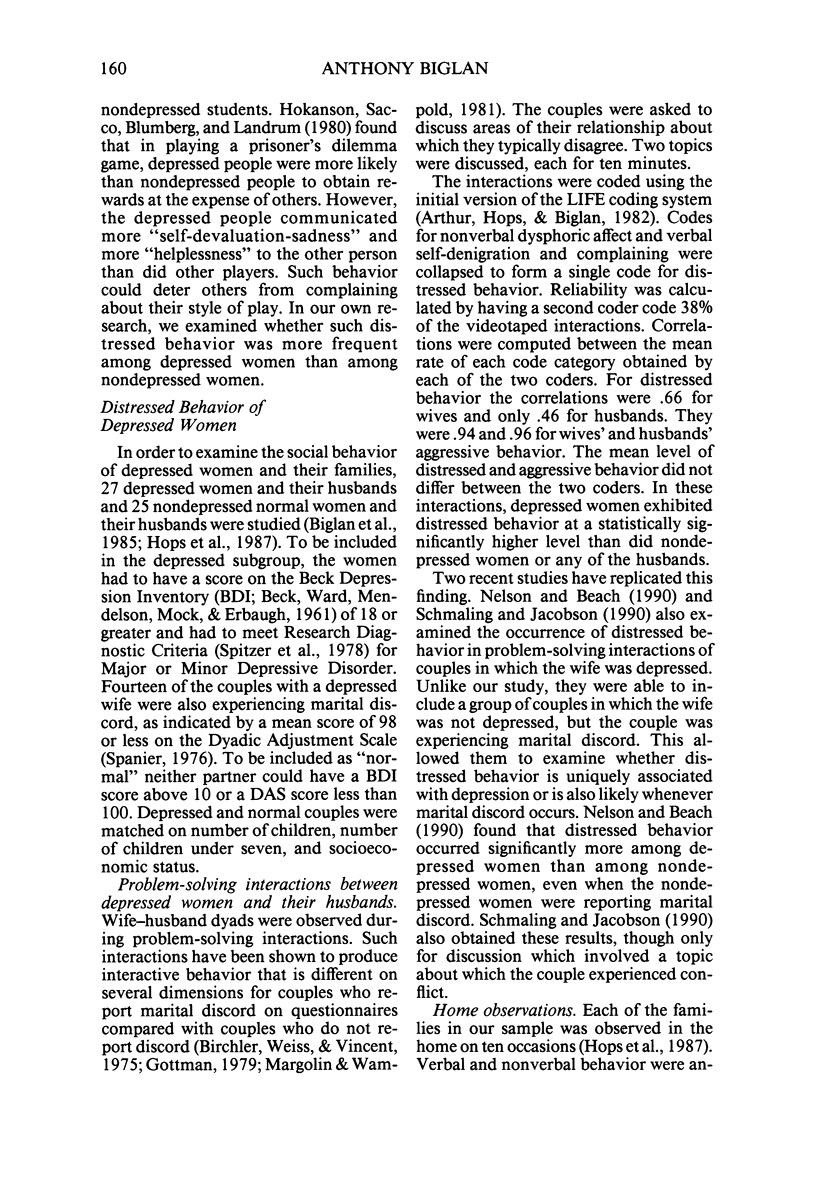
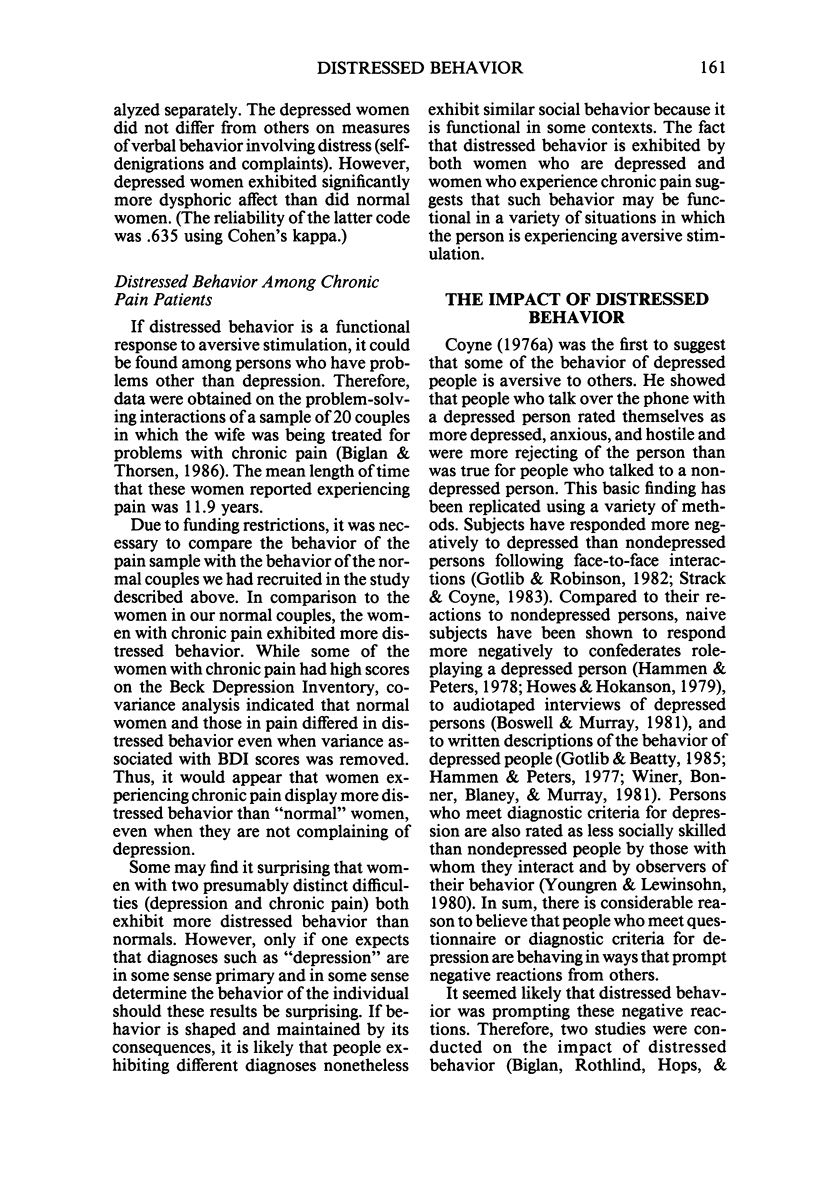

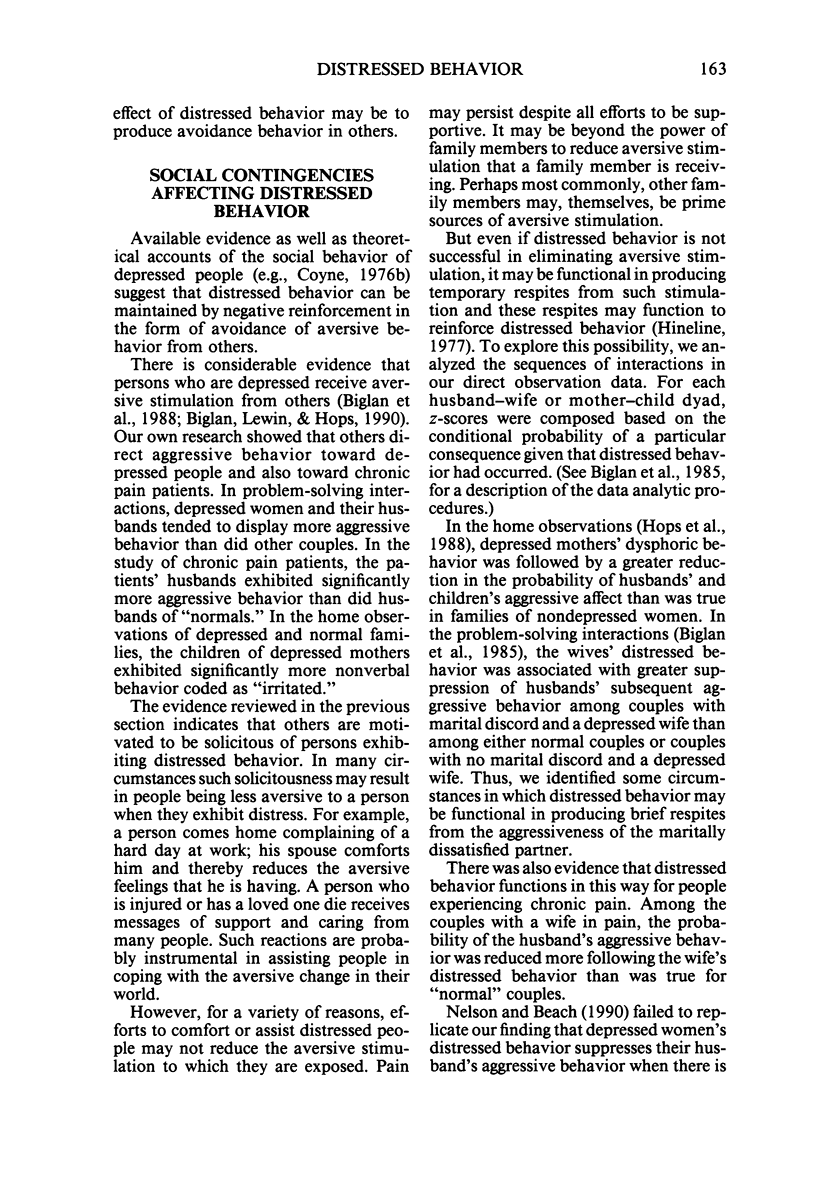
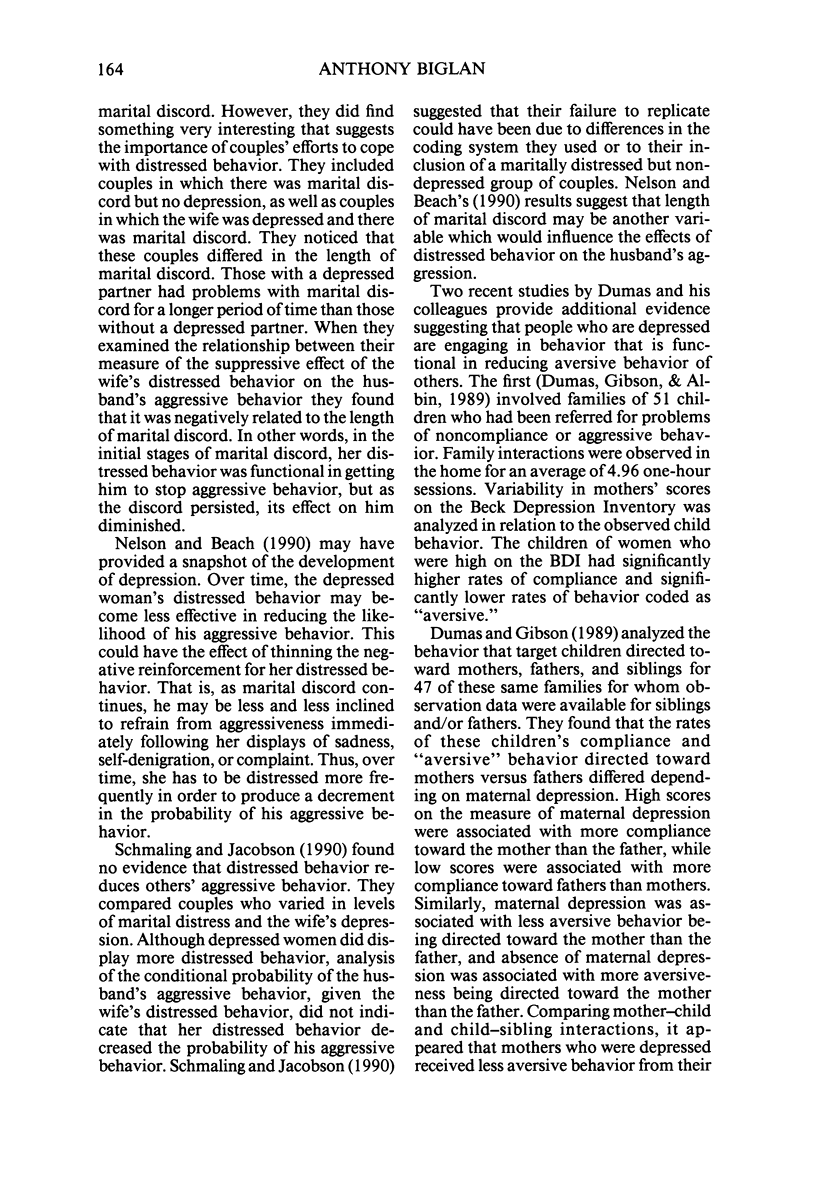
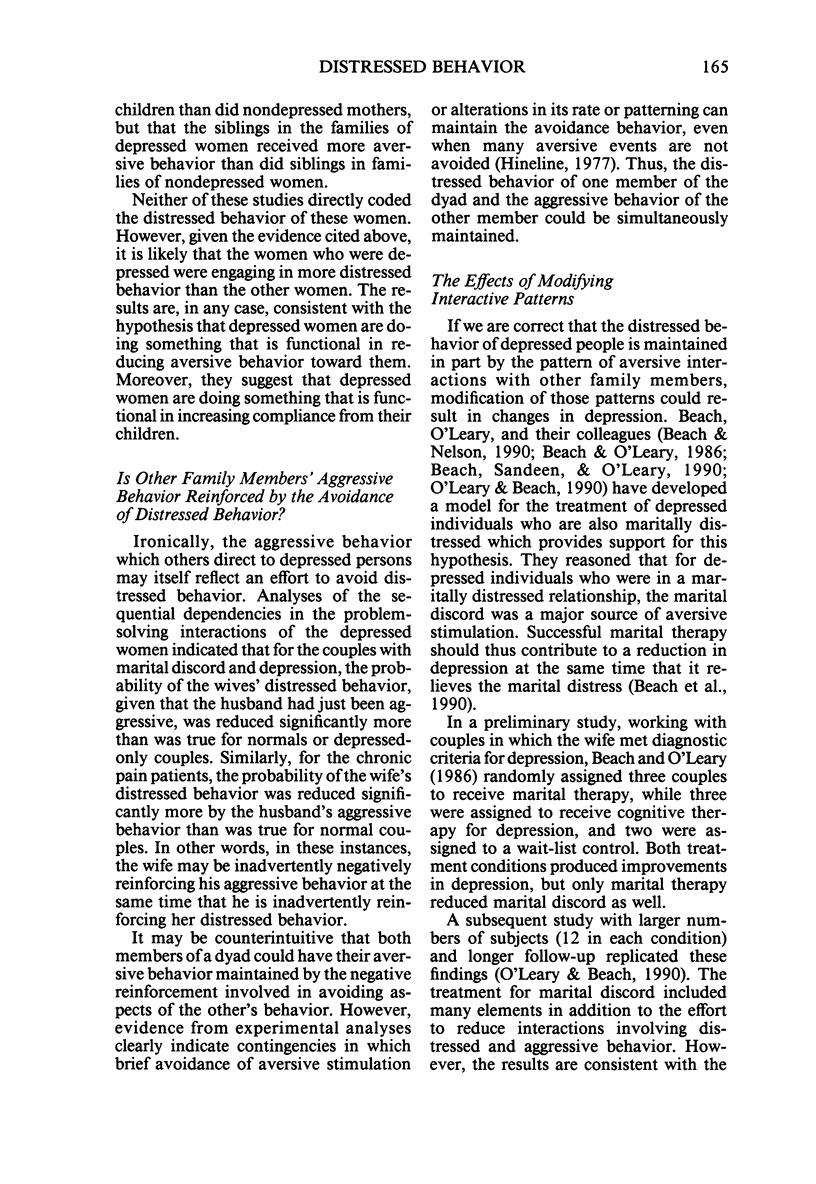
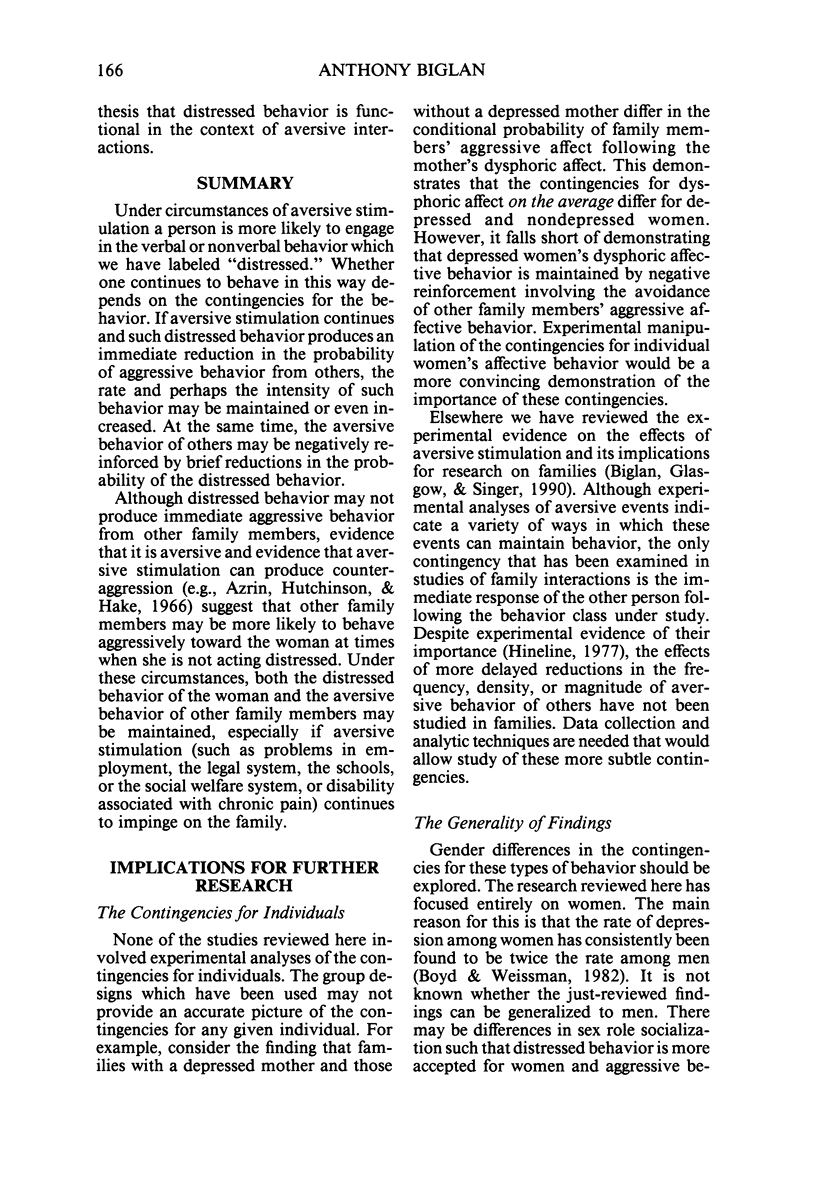
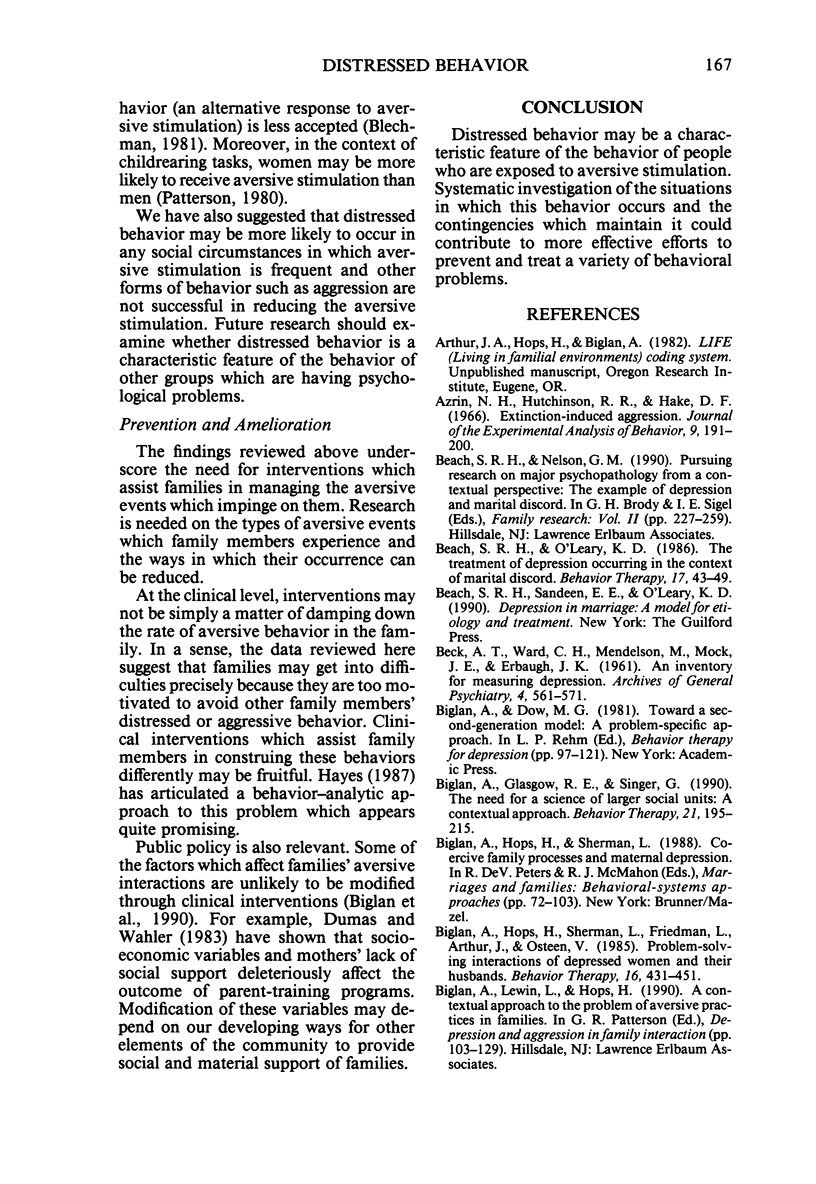
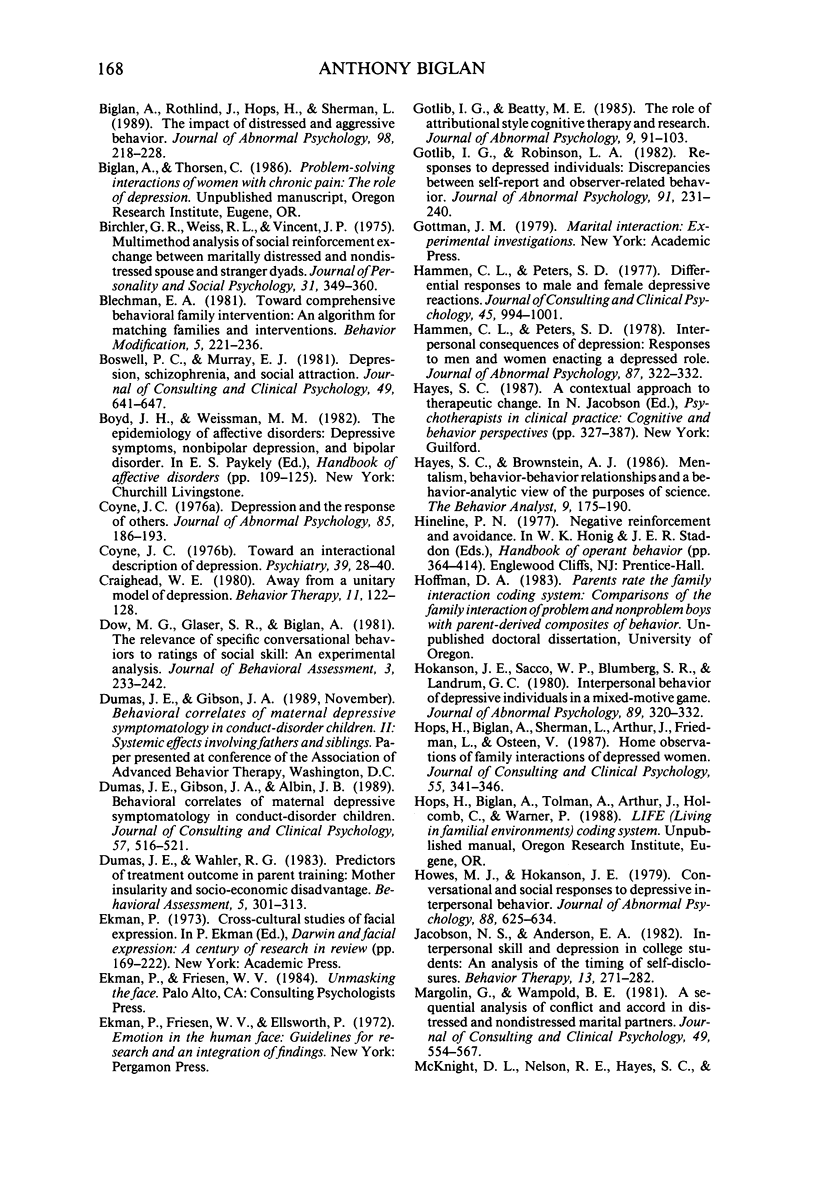
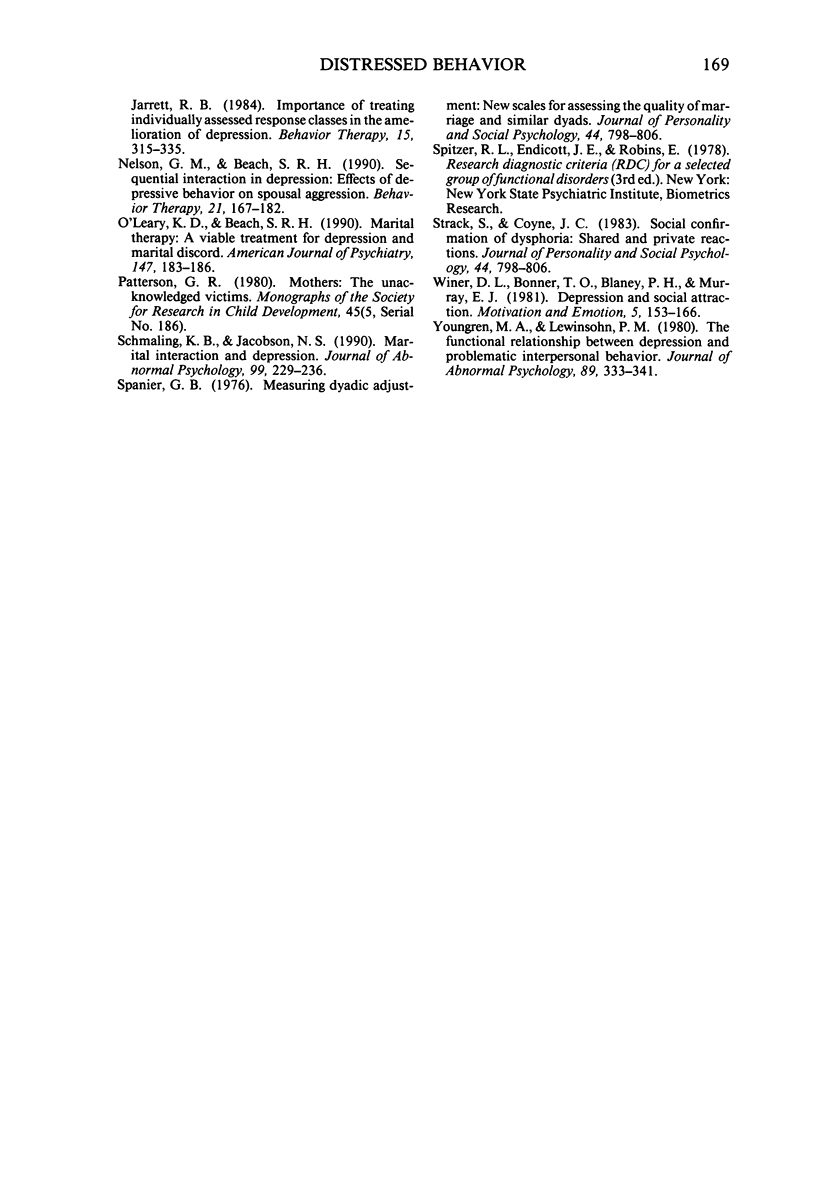
Selected References
These references are in PubMed. This may not be the complete list of references from this article.
- Azrin N. H., Hutchinson R. R., Hake D. F. Extinction-induced aggression. J Exp Anal Behav. 1966 May;9(3):191–204. doi: 10.1901/jeab.1966.9-191. [DOI] [PMC free article] [PubMed] [Google Scholar]
- BECK A. T., WARD C. H., MENDELSON M., MOCK J., ERBAUGH J. An inventory for measuring depression. Arch Gen Psychiatry. 1961 Jun;4:561–571. doi: 10.1001/archpsyc.1961.01710120031004. [DOI] [PubMed] [Google Scholar]
- Biglan A., Rothlind J., Hops H., Sherman L. Impact of distressed and aggressive behavior. J Abnorm Psychol. 1989 Aug;98(3):218–228. doi: 10.1037//0021-843x.98.3.218. [DOI] [PubMed] [Google Scholar]
- Boswell P. C., Murray E. J. Depression, schizophrenia, and social attraction. J Consult Clin Psychol. 1981 Oct;49(5):641–647. doi: 10.1037//0022-006x.49.5.641. [DOI] [PubMed] [Google Scholar]
- Coyne J. C. Depression and the response of others. J Abnorm Psychol. 1976 Apr;85(2):186–193. doi: 10.1037//0021-843x.85.2.186. [DOI] [PubMed] [Google Scholar]
- Coyne J. C. Toward an interactional description of depression. Psychiatry. 1976 Feb;39(1):28–40. doi: 10.1080/00332747.1976.11023874. [DOI] [PubMed] [Google Scholar]
- Dumas J. E., Gibson J. A., Albin J. B. Behavioral correlates of maternal depressive symptomatology in conduct-disorder children. J Consult Clin Psychol. 1989 Aug;57(4):516–521. doi: 10.1037//0022-006x.57.4.516. [DOI] [PubMed] [Google Scholar]
- Gotlib I. H., Robinson L. A. Responses to depressed individuals: discrepancies between self-report and observer-rated behavior. J Abnorm Psychol. 1982 Aug;91(4):231–240. doi: 10.1037//0021-843x.91.4.231. [DOI] [PubMed] [Google Scholar]
- Hammen C. L., Peters S. D. Differential responses to male and female depressive reactions. J Consult Clin Psychol. 1977 Dec;45(6):994–1001. doi: 10.1037//0022-006x.45.6.994. [DOI] [PubMed] [Google Scholar]
- Hammen C. L., Peters S. D. Interpersonal consequences of depression: responses to men and women enacting a depressed role. J Abnorm Psychol. 1978 Jun;87(3):322–332. [PubMed] [Google Scholar]
- Hayes S. C., Brownstein A. J. Mentalism, behavior-behavior relations, and a behavior-analytic view of the purposes of science. Behav Anal. 1986 Fall;9(2):175–190. doi: 10.1007/BF03391944. [DOI] [PMC free article] [PubMed] [Google Scholar]
- Hokanson J. E., Sacco W. P., Blumberg S. R., Landrum G. C. Interpersonal behavior of depressive individuals in a mixed-motive game. J Abnorm Psychol. 1980 Jun;89(3):320–332. doi: 10.1037//0021-843x.89.3.320. [DOI] [PubMed] [Google Scholar]
- Hops H., Biglan A., Sherman L., Arthur J., Friedman L., Osteen V. Home observations of family interactions of depressed women. J Consult Clin Psychol. 1987 Jun;55(3):341–346. doi: 10.1037//0022-006x.55.3.341. [DOI] [PubMed] [Google Scholar]
- Howes M. J., Hokanson J. E. Conversational and social responses to depressive interpersonal behavior. J Abnorm Psychol. 1979 Dec;88(6):625–634. doi: 10.1037//0021-843x.88.6.625. [DOI] [PubMed] [Google Scholar]
- Margolin G., Wampold B. E. Sequential analysis of conflict and accord in distressed and nondistressed marital partners. J Consult Clin Psychol. 1981 Aug;49(4):554–567. doi: 10.1037//0022-006x.49.4.554. [DOI] [PubMed] [Google Scholar]
- O'Leary K. D., Beach S. R. Marital therapy: a viable treatment for depression and marital discord. Am J Psychiatry. 1990 Feb;147(2):183–186. doi: 10.1176/ajp.147.2.183. [DOI] [PubMed] [Google Scholar]
- Schmaling K. B., Jacobson N. S. Marital interaction and depression. J Abnorm Psychol. 1990 Aug;99(3):229–236. doi: 10.1037//0021-843x.99.3.229. [DOI] [PubMed] [Google Scholar]
- Strack S., Coyne J. C. Social confirmation of dysphoria: shared and private reactions to depression. J Pers Soc Psychol. 1983 Apr;44(4):798–806. doi: 10.1037//0022-3514.44.4.798. [DOI] [PubMed] [Google Scholar]
- Youngren M. A., Lewinsohn P. M. The functional relation between depression and problematic interpersonal behavior. J Abnorm Psychol. 1980 Jun;89(3):333–341. doi: 10.1037//0021-843x.89.3.333. [DOI] [PubMed] [Google Scholar]


